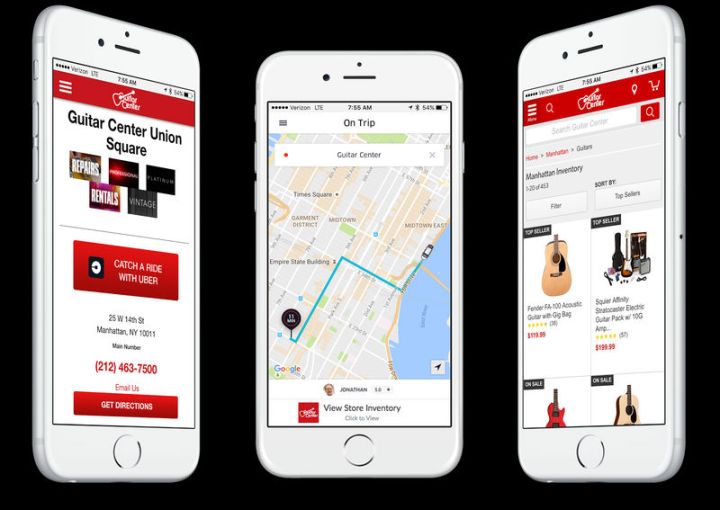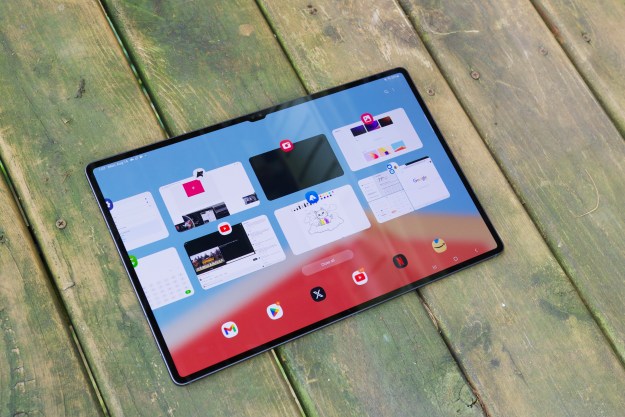
It works like this: Shoppers can call for an Uber direct from Yext client websites — such as Guitar Center or Cole Haan — by clicking a “Catch a Ride With Uber” button. An Uber will be summoned to your location, then take you directly to the selected business (Yext says it has street addresses on file to ensure that you’re taken to the front door of the business rather than their mailing address, so don’t worry).
“Uber and Yext share the same mission — to help people go places,” said Marc Ferrentino, Yext strategy and product head, said in a statement. “We’re closing the loop so that businesses can provide a great experience all the way from search results to checkout — which includes actually getting to the location.”
Like everything, there’s a catch. Instead of the distraction-free user experience you’re used to with Uber, you’ll be served with ads for whatever business you’re heading to. Ads are a general term, though — while it could be your standard ad, you may also be served with discounts to use at the store, or some other promotional material, according to the two companies..
An Uber spokesperson described the effort in a statement to The Verge as “added functionality within the Uber app for customers who are interested in it for their destination.” In other words, the company doesn’t want you to see it as just an ad.
Whether that happens remains to be seen. We’re already bombarded daily with advertising in many forms, and to some people, Yext’s functionality might prove an annoyance. The everyday Uber ride still remains ad-free.
Editors' Recommendations
- Withings doesn’t want you to look at its latest smart scale
- Pixel Watch design video reveals what Google doesn’t want you to see
- Surface Laptop 3s are repairable, but Microsoft doesn’t want you to do it


